
The number of people choosing careers in software development is rising significantly faster than in other industries.
Yet, finding new engineering talent has never been more challenging.
To overcome this obstacle and build a successful team, you’ll have to adjust your approach to hiring. This article will guide you through practical advice on how to navigate through the saturated market and find qualified engineers.
Table of Contents
Get better at talent acquisition
If you want to tackle the software engineer shortage effectively, you need to adopt a proactive approach to recruiting. In other words, you should get better with talent acquisition to attract the best engineers.
Every year, Fortune magazine publishes a list of the top 100 companies to work for. In 2021, the top two companies were tech businesses.
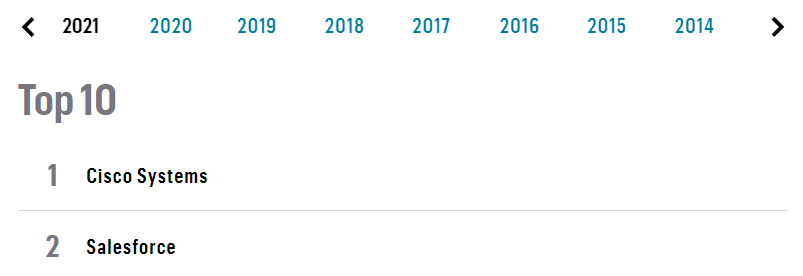
Still, you won’t see Cisco Systems and Salesforce resting on their laurels; both companies continuously invest in their engineer recruiting processes despite being so sought after.
In fact, both companies made it to our list of software companies with excellent employer branding.
Building an employer brand is a piece of advice you’ll find across many talent acquisition strategy guides.
In just a few words, employer branding allows you to showcase how working with you benefits employees in ways other than salary. For instance, Meta does this with multiple website sections dedicated to different career tracks at the company.

Writing about work and life as part of your organization can motivate engineers to reach out to you even before you start actively recruiting, which is the ultimate goal of software talent acquisition strategies.
You shouldn’t forget about the power of storytelling in employer branding, either.
Statistics and employee satisfaction surveys are helpful, but real employees telling their stories are even more captivating. So, you could ask some of your engineers to share about their careers with you, as Meta does.

If you want more details on building employer branding, you might want to check out our guide available here.
Another way you can become better at talent acquisition is by relying on data and making data-driven decisions rather than guessing.
Let’s say your company is active in LinkedIn software communities. If you’ve implemented a new method of communicating with potential candidates, you need to inspect its effectiveness before committing fully.
We suggest using LinkedIn’s Talent Hub, an applicant tracking system, for this purpose. The system allows you to analyze your talent acquisition processes and determine what works the best.
In the following image, you can see the tool analyzing sources where candidates are found, allowing you to focus your efforts on the platform producing the best results.
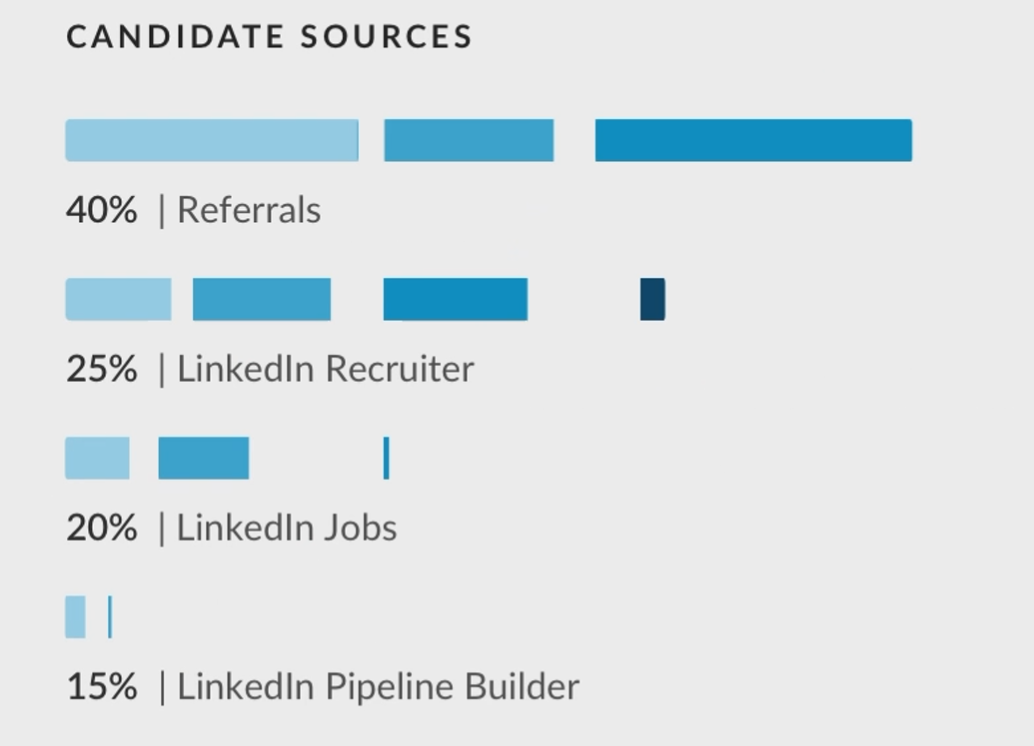
So, trying out various talent acquisition strategies and analyzing their performance will allow you to determine what works best for your company.
A dynamic approach like this one enables you to take charge during the engineer shortage without passively waiting for it to come to an end.
Offer better salaries
This piece of advice is relatively straightforward: if you want to attract great engineers, you have to offer excellent terms of employment, especially when it comes to compensation.
According to Stack Overflow’s 2021 pulse survey, salary is the most influential motivator for engineers changing jobs, so offering the highest one you can is highly advisable.
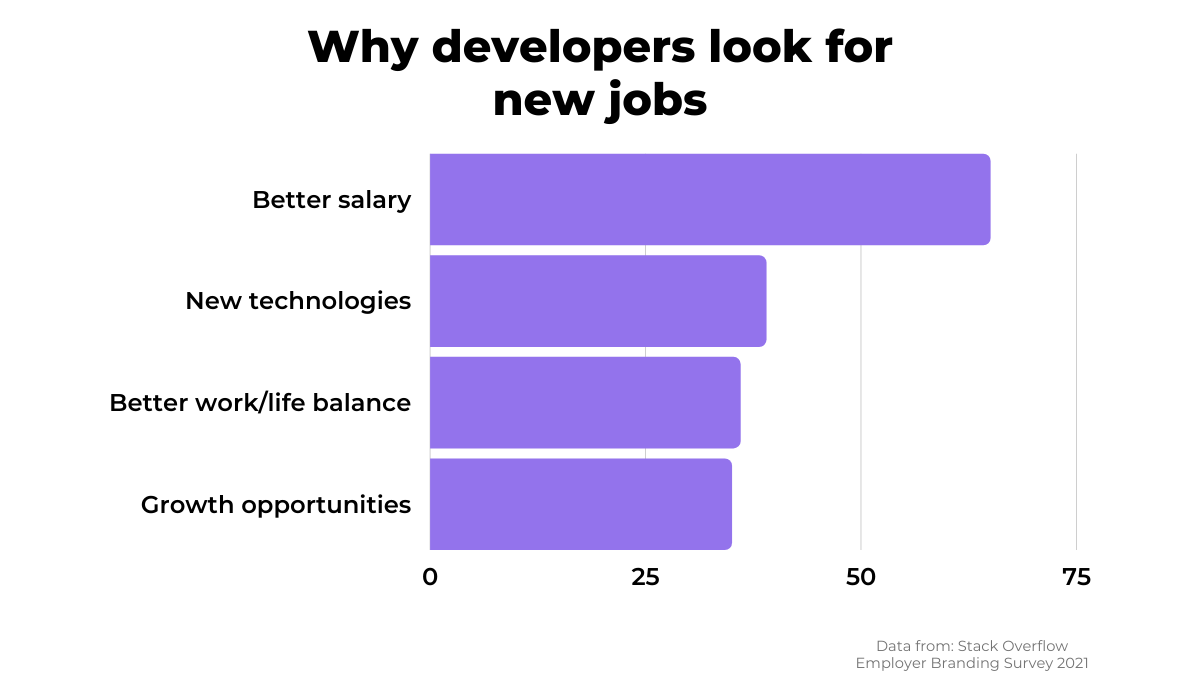
If you’re wondering how high your software engineer salaries should go, we, unfortunately, don’t have an answer other than—the bigger, the better.
Still, you need a point of reference to base your decision. Because of this, you might be interested in the national average for your country or region.
In the US, median annual wages for software developers range from $105k to $110k, according to the data published by the Bureau of Labor Statistics.
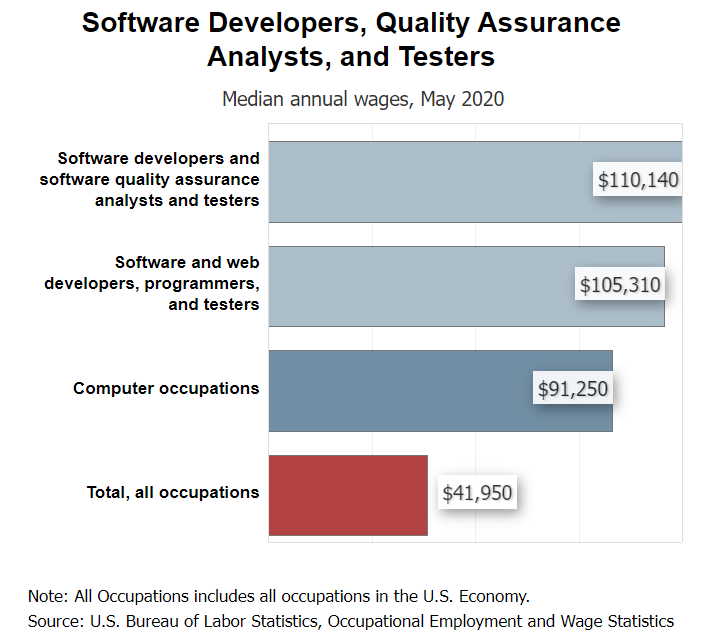
Offering competitive wages is not an issue for a FAANG company.
However, if you want to ensure the long-term success of your business, you have to manage your funds wisely. That may require you to offer below-average salaries.
For instance, Southleft, a website development company, offers a yearly salary of up to $85k to frontend developers.
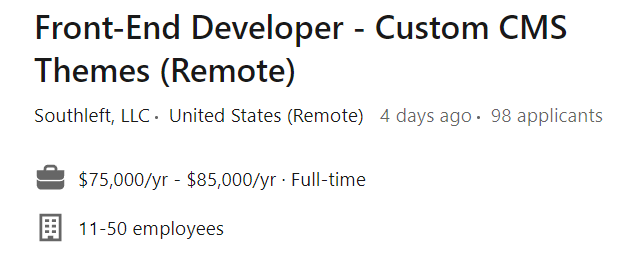
Granted, the company requires applicants to only have three years of experience, but the salary is still below the national average.
Luckily, there’s a way around this issue.
Øyvind Forsbak, a Forbes Technology Council Member and CTO at Orient Software Development, claims that, while all candidates look for reasonable compensation, not all is lost for companies that can’t match Apple’s engineer salaries.
Here’s what Forsbak advises.
“If you cannot raise your salary budget due to financial constraints, then try giving employees additional perks such as company-subsidized lunches, flexible work hours, and time off instead.”
Let’s return to the Southleft example to see what this looks like in practice. If you scroll down the frontend dev job ad we’ve just seen, you’ll find an abundant number of benefits employees get in addition to the salary.
The following image shows just some of them.
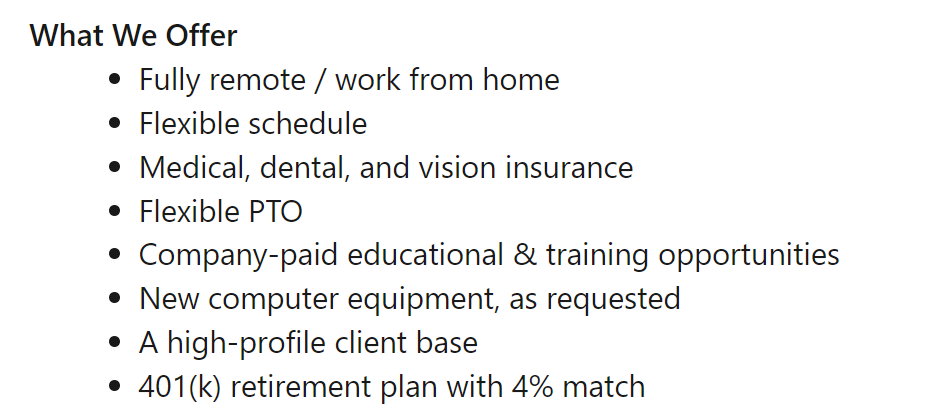
As you can see, the company compensates for the salary by paying for insurance, training opportunities, and offering flexibility in how work is organized.
All in all, if you’re looking to overcome the software engineer shortage, you’ll have to offer your engineers tangible benefits.
Therefore, while a competitive salary is certainly desirable, you can make up for a more modest one by offering perks and benefits your competitors don’t have.
Outsource when needed
If you’re short on funds or time to assemble an in-house development team, you can consider outsourcing as a way of combating the software engineer shortage. And the great thing about outsourcing is that the entire world is your oyster.
Outsourcing is not limited to lesser-known companies only. Take WhatsApp, for instance.

While they do have an in-house engineering team, the popular app was built in collaboration with developers outsourced in Russia.
There are more success stories about hiring external engineers. The following table shows several big technology companies that have built their products with the help of outsourced professionals.
Tech company | Outsourcing partner |
Lebara | |
Viber | |
Unity Technologies |
You could use the column listing the outsourcing partners as a source of companies you could collaborate with.
Not many companies openly display the fact that they outsource engineers, but the outsourcing trend is still on the rise.
In fact, a 2022 Commit survey has found that outsourcing for software development is expected to grow by a staggering 70% between 2022 and 2023.
The survey has also shown that the most frequently outsourced tech positions in 2021 were UI/UX designers and software developers.
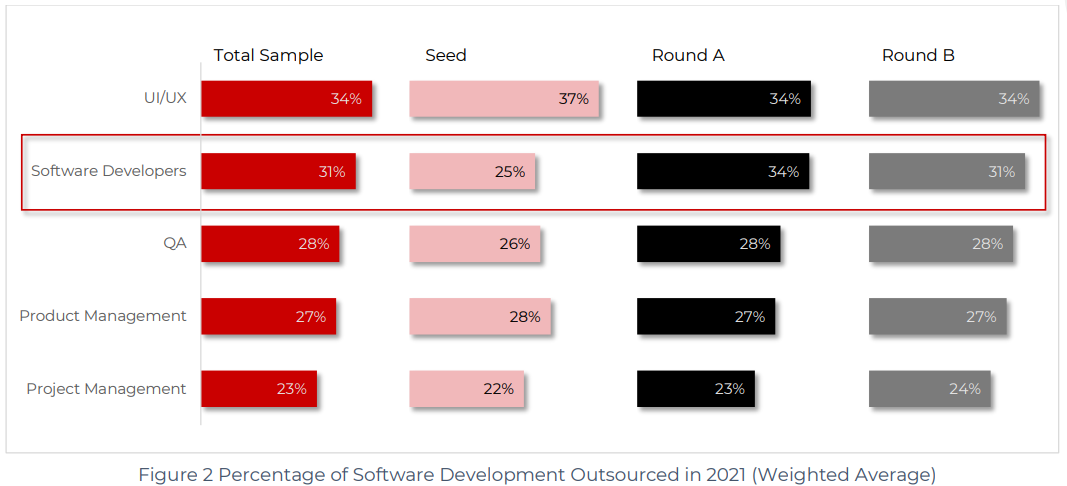
So, if your team could benefit from having an additional engineer on board but you don’t have time for the lengthy hiring process, then outsourcing is the way to go.
You can outsource talented engineers across the globe. The difference in the standard of living will allow you to pay less for the same quality of code.
For example, engineers from Poland, Ukraine, and Argentina receive high-level software education and are generally considered to be top offshore performers, with excellent English language skills.
Regardless of the outsourcing destination, you need appropriate platforms to collaborate with outsourced engineers. Upwork is one of the best options here.
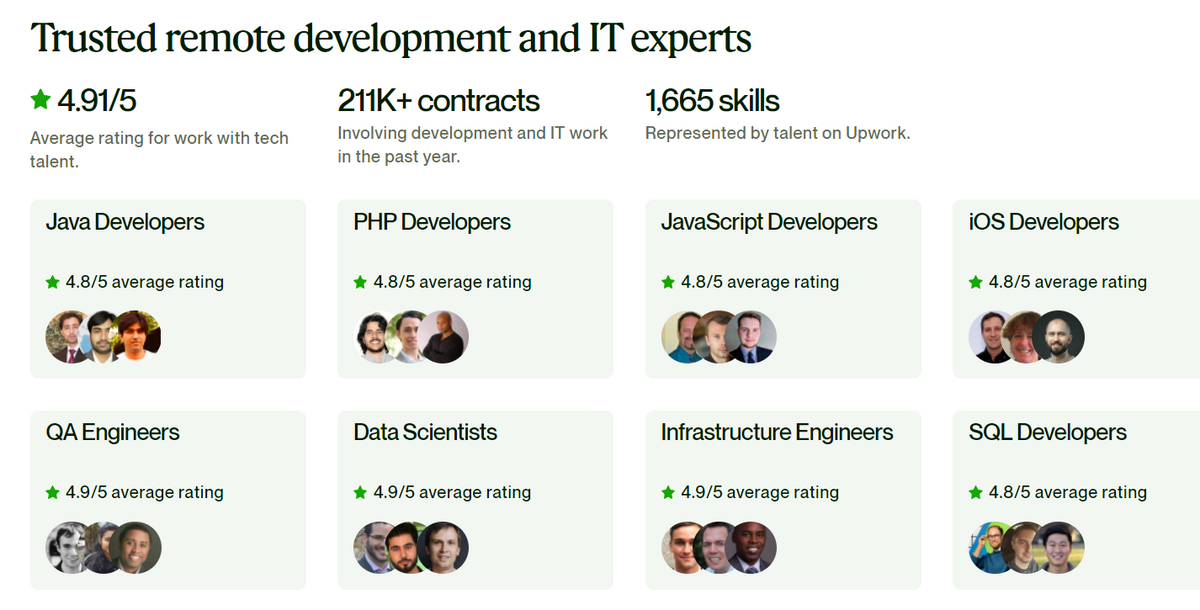
It’s worth noting that Upwork gathers engineers of all skill levels, which makes prices generally approachable. However, if the budget is not limited, you may want to consider Toptal.
As the platform’s name suggests, Toptal only works with the top 3% of developers.
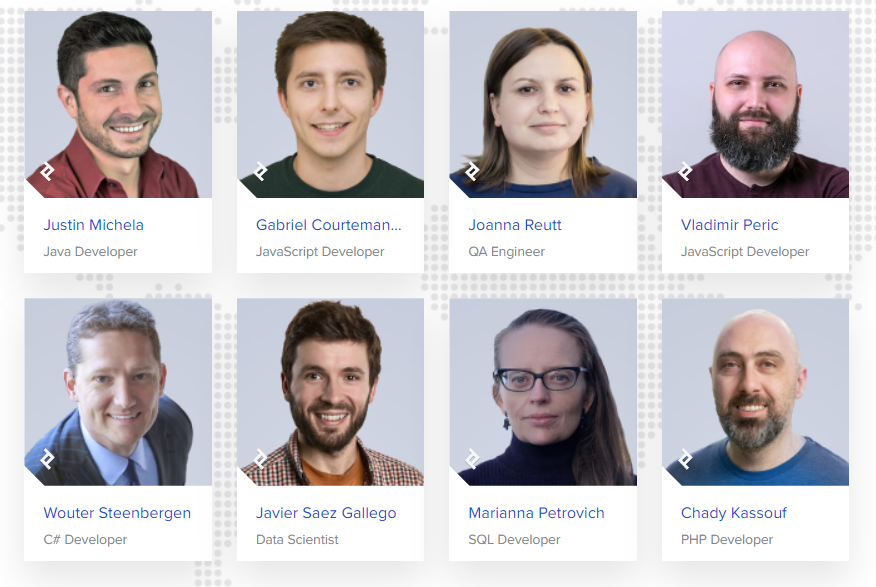
Moreover, using Toptal spares you from having to spend hours selecting the right freelancer.
Their director of engineering asks clients to define their goals and technical needs and selects the right engineer accordingly.
To sum up, outsourcing is an excellent short-term solution for tackling the engineer shortage.
Whether you subcontract an entire team or hire a couple of contractors, outsourcing helps you make progress instead of letting the staffing challenges undermine your work.
Hire for skills
The shortage of software professionals makes the possibility of recruiting MIT alumni with ten years of experience somewhat unrealistic for the average company. So, rather than hiring for qualifications, you should focus on high-potential candidates and help them polish their skills along the way.
When CodinGame asked tech recruiters about their priorities when considering engineers’ applications, diplomas and certificates ranked relatively low, compared to previous experience and personal projects.
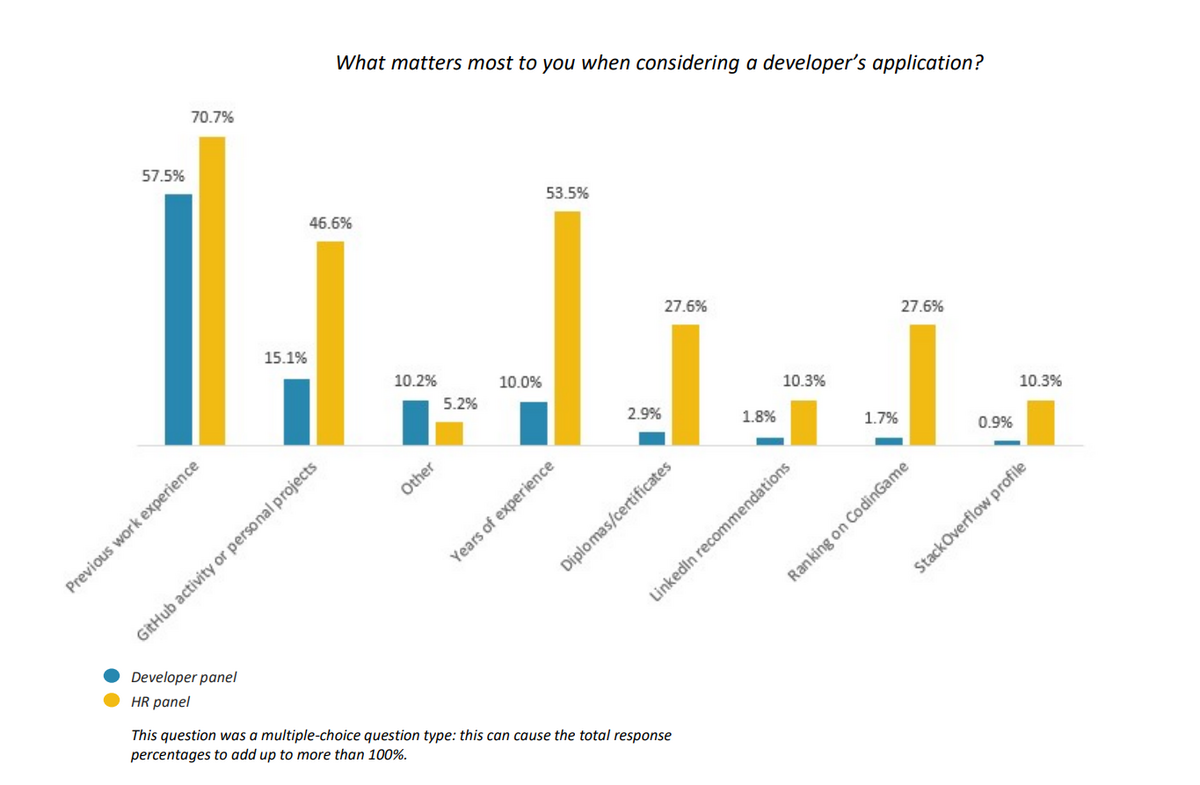
As the graph shows, the technical staff cares even less about these credentials than their HR colleagues.
You’ll find more proof that a computer science degree is not a reliable indicator of coding abilities by analyzing the opinions of those who have experience with developers without formal education.
Take a look at the following answer to a Quora question about hiring programmers with different backgrounds.

According to this comment, candidates without formal education can be as successful in coding, if not even better.
The comment also mentions adding the phrase “or equivalent” next to the degree requirements.
That’s also a common practice in large tech companies that place more emphasis on proving performance than degree titles.
Here’s an example from Apple’s job ad for an iOS frameworks engineer, where applicants are not required to hold a bachelor’s degree in CS if they have equivalent engineering experience.

So, now that we’ve determined that credentials aren’t necessarily indicative of an engineer’s skills, let’s see how you can identify candidates with great potential.
Since you’re hiring for skills, you need a reliable method to test them.
Coding tests are the most accurate way to determine a candidate’s skill levels. They provide you with an insight into the coding practices of your potential engineers.
If you don’t have time to devise coding assignments, you could use an assessment tool such as HackerRank, or Triplebyte, its free alternative.
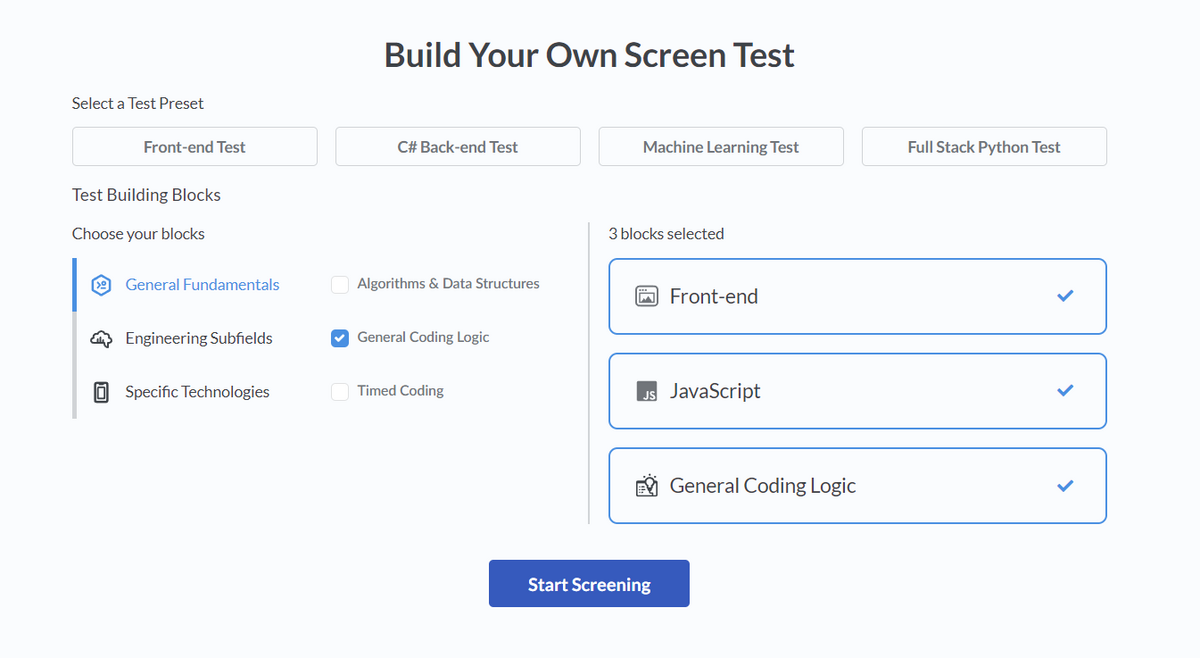
These tools allow you to build custom tests according to the engineering position you’re hiring for.
When you test candidates, you’ll be able to assess how they’d perform at your company. Examining their code lets you evaluate their abilities more accurately than by relying on the education and experience items listed in the resume.
Once you’ve found promising candidates, it’s time to bring them to their full potential with training and education.
Invest in bootcamps
Since finding engineers with impeccable coding skills is not an easy task, you should hire the ones with solid foundations and help them hone their skills with education, especially with bootcamps.
You could also create your own bootcamp to train future engineers according to your needs.
Bootcamps are a common way of upskilling or training staff.
While most software companies probably don’t need help with training juniors in web development or iOS, it’s convenient to let the professionals teach the staff about emerging technologies.
For instance, Coding Dojo, a company that provides corporate software bootcamps, offers courses about blockchain. Here’s a part of the curriculum.
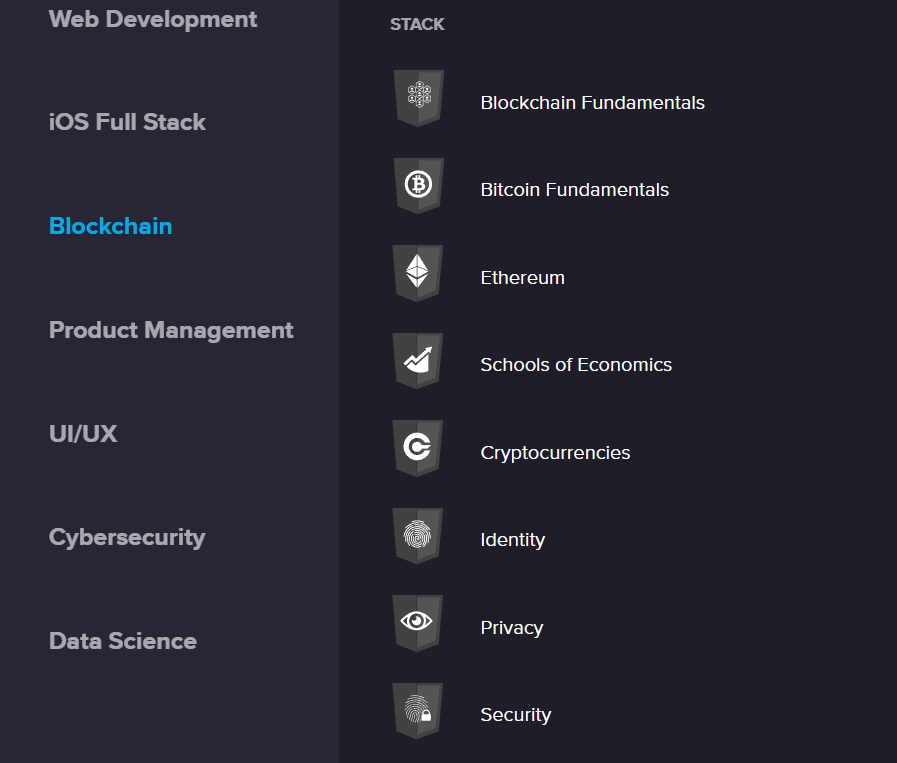
So, if your engineers have been dealing with standard technologies and the need arises to tackle crypto payments, it might be helpful to invest in an external bootcamp to ensure your team stays on top of tech trends.
However, if you’re looking for a long-term solution to minimize the impact of the software engineer shortage, you could develop your own bootcamp.
Some large companies, such as Amazon, have their internal coding bootcamps designed for upskilling the staff.

Over the period of nine months, trainees are taught knowledge and skills, enabling them to work as software development engineers.
In case your company is focused on software development only, chances are that you don’t have sales or warehouse staff eager to upgrade their careers.
If so, you could design a bootcamp program open to the general public or university students and offer jobs to the most successful bootcamp graduates.
After all, hiring bootcamp graduates is becoming a standard practice adopted by huge tech companies, such as Dropbox.
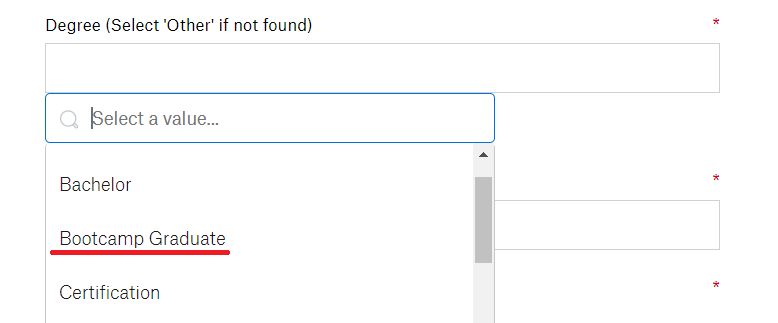
Creating the curriculum and teaching participants yourself costs a lot of time and money, though. This is why some companies partner with bootcamp providers and create programs together.
For instance, Trive, an e-commerce company, has partnered with a software development training provider and created a PHP full course.
The immersive course allows candidates to learn under mentor supervision. All candidates are offered interviews at the company, and the most successful ones land the web developer position.

All things considered, coding bootcamp programs can help you upskill your staff, refresh your engineers’ knowledge, and even create new engineers.
If you design your own bootcamp, hiring the graduates will ensure that you get engineers trained in accordance with the practices implemented at your company, so they’ll require less training down the line.
Conclusion
If you don’t want your development team to suffer from severe burnout, you can’t passively wait for the software engineer shortage to resolve on its own.
Instead, it’s better to tackle the problem head-on. This means upgrading your hiring practices and working with what you have.
That way, you’ll be able to form a great engineering team despite the obstacles in the job market.




